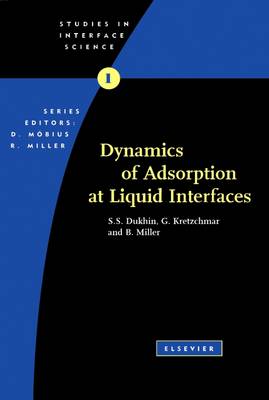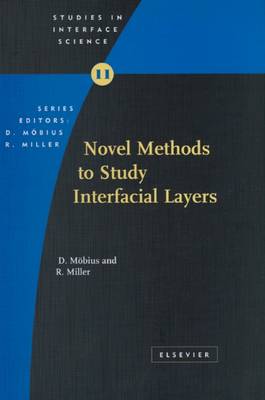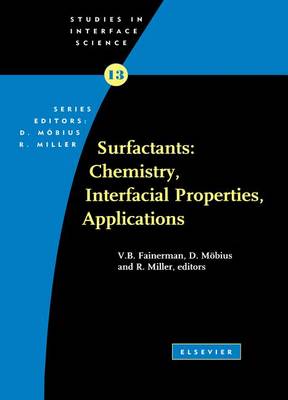Studies in Interface Science
3 primary works
Book 1
Dynamics of Adsorption at Liquid Interfaces
by S S Dukhin, G Kretzschmar, and R Miller
Published 1 January 1995
As the first of its kind, this book provides a valuable introduction for scientists and engineers interested in liquid/fluid interfaces and disperse systems to the rapidly developing area of adsorption dynamics. It is the first extensive review available on the subject of dynamics of adsorption and gives a general summary of the current state of adsorption kinetics theory and experiments. Current progress in recently designed set-ups and improved and generalised known methods for studying interfacial relaxations is reviewed. In addition, the role of the electric charge of surfactants in the adsorption process is discussed in terms of a non-equilibrium distribution of adsorbing ions in the diffuse layer.Present theories of the effect of dynamic adsorption layers on mobile surfaces, such as moving drops and bubbles, based on both diffusion and kinetic controlled adsorption models are described and efficient approximate analytical methods to solve the mathematical problem of coupling surfactant transport and hydrodynamics are introduced. The role of a dynamic adsorption layer in bubble rising, film drainage and film stabilisation and in complex processes such as flotation and microflotation is discussed.Containing more than 1100 references, the book is essential reading for industrial scientists and graduate and post-graduate students in physical, surface and colloid chemistry, physico-chemical hydrodynamics, water purification and mineral processing.
Book 11
This book presents a number of selected papers given at the LB9 conference, held in Potsdam, Germany, in August 2000. It is dedicated to new techniques and methodologies for studying interfacial layers. One group of manuscripts deals with the application of surface plasmons at solid interfaces, used for example in resonance spectroscopy and light scattering. New applications of various types of Atomic Force Microscopy are reported making use of various modifications of tips. A number of chapters are dedicated to light emitting diodes built with the help of LB layers. The aim of these studies is the improvement of efficiency. Electrochemical methods were described as tools for developing sensors, in particular miniaturised pH or gas sensors.
The application of synchrotron X-ray and NMR techniques have been described in detail in two extended chapters. It is demonstrated how molecular information can be detected by these methods for various types of interfacial layers.
This monograph, along with 130 papers that have been submitted for publication in the special issues of relevant journals, represent the proceedings of the LBP conference.
The application of synchrotron X-ray and NMR techniques have been described in detail in two extended chapters. It is demonstrated how molecular information can be detected by these methods for various types of interfacial layers.
This monograph, along with 130 papers that have been submitted for publication in the special issues of relevant journals, represent the proceedings of the LBP conference.
Book 13
This publication provides comprehensive material on the chemical and physical attributes of surfactants and new models for the understanding of structure-property relationships. Surfactants Chemistry, Interfacial Properties, Applications provides efficient instruments for the prognostication of principal physicochemical properties and the technologic applicability from the structure of a surfactant through the discussion of interrelations between the chemical structure, physicochemical properties and the efficiency of technologic application.
Also included are informative overviews on new experimental techniques and abundant reference material on manufacturers, nomenclature, product properties, and experimental examples. The publication is accompanied by a CD-ROM, which is needed for the application of the thermodynamic and kinetic models to experimental data.
Also included are informative overviews on new experimental techniques and abundant reference material on manufacturers, nomenclature, product properties, and experimental examples. The publication is accompanied by a CD-ROM, which is needed for the application of the thermodynamic and kinetic models to experimental data.


